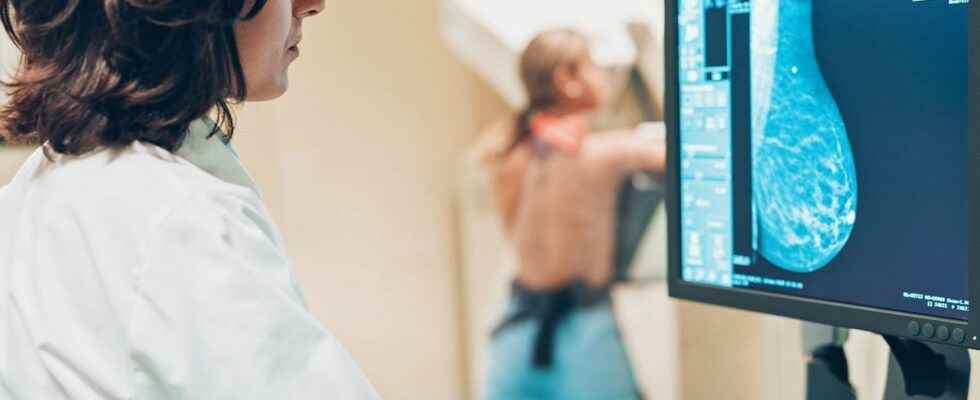Published on
Updated
Reading 3 mins.
Currently, screening for breast cancer concerns all women in an age group, regardless of their risk factors or predisposition to the disease. Norwegian and Spanish researchers have worked together on a model for predicting individual risk of breast cancer in order to create personalized screening strategies in the future.
What if instead of prescribing the same breast cancer screening for all women, screening recommendations could be individualized according to each woman’s risk? It’s the brainchild of two teams of scientists from the Norwegian Cancer Registry and the Hospital del Mar Medical Research Institute in Barcelona, Spain, who worked together. Their findings were presented on Wednesday November 17 at the 13th European Breast Cancer Conference,
Screening results of 50,000 women scrutinized
For this joint work, the data used by the researchers was provided by the Norwegian Cancer Registry, i.e. approximately 50,000 women who participated in the Norwegian national screening, between 2007 and 2020.
This screening, called BreastScreen Norway, is a national program that invites all Norwegian women between the ages of 50 and 69 to have a mammogram every two years. Objective: to detect the disease as early as possible in order to improve the chances of survival for those affected by cancer.
An individual risk assessment
By analyzing these data, the researchers wanted to estimate the individual risks of these women of developing the disease, over a period of four years.
The risks considered were age, family history of breast cancer, history of benign breast disease, breast density (a measure of glands and fibrous tissue in the breast), body mass index and consumption of ‘alcohol.
They then compared these risk factors in women with and without a diagnosis of breast cancer to assess the impact of each individual risk factor. This is how a model was born, making it possible to calculate the individual risk of each woman, faced with the disease.
“Better guide breast cancer screening strategies”
The authors of this work found that the risk of developing breast cancer over a four-year period ranged from 0.22% for some people to 7.43% for others, with a median risk of 1.10 %.
Dr. Javier Louro from Hospital del Mar, who presented this study, explains: “We have successfully developed and validated a model to estimate the risk of breast cancer in women participating in BreastScreen Norway, the national breast cancer screening program in Norway. Several breast cancer risk prediction models have been created, but we believe this is one of the first models designed to guide breast cancer screening strategies throughout a woman’s lifetime. person using real data from a screening program.
Adapt screening according to risk
For the researcher, the model “could be seen as a key to designing personalized screening aimed at reducing the harms and increasing the benefits of mammography screening”.
To be more telling, Javier Louro gives an example. “A low-risk woman might be offered standard mammography screening every three or four years instead of every two years. A woman at average risk could be offered screening with advanced 3D mammography every two years, while women at high risk could be offered a new screening test with mammography or MRI every year. All these strategies are still theoretical and must be studied in terms of their effectiveness. says the scientist.
The interest of such screening could also mean fewer people with “false positives”, less “overdiagnosis” but also a reduction in interval cancers. While waiting for a potential implementation of this device, the researchers explain that they need to deepen their results by studying its impact in particular, by developing a computer simulation.
